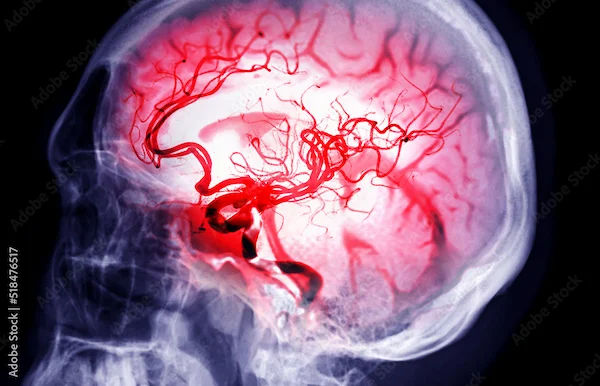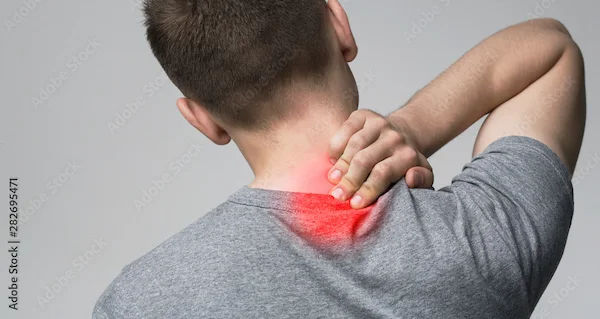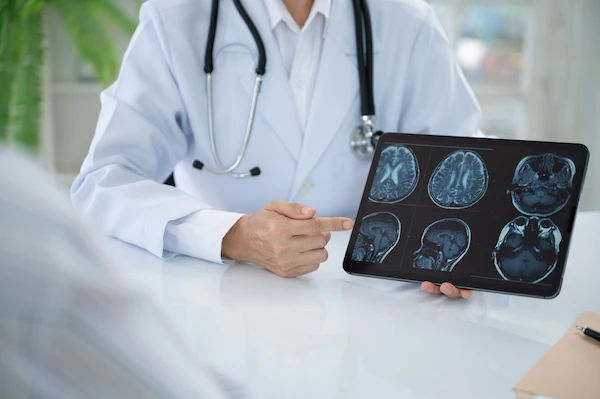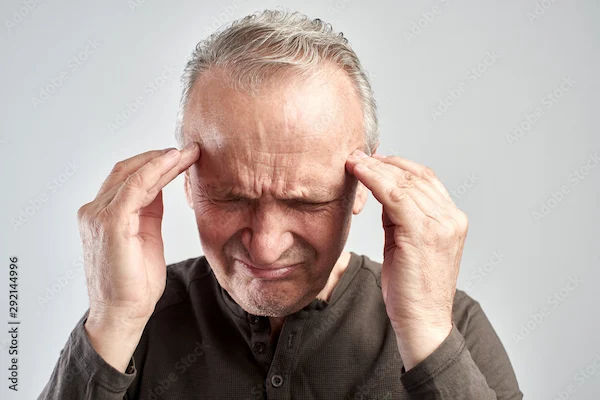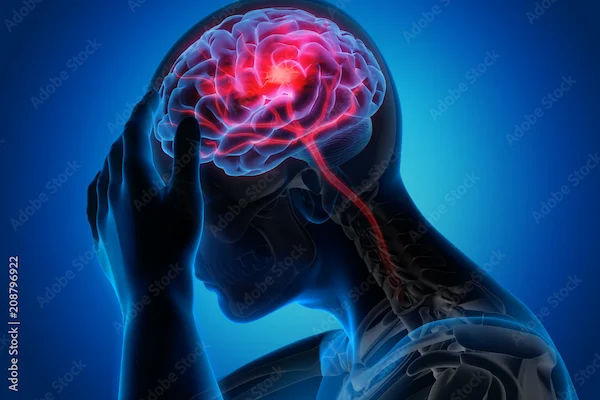Stroke Signs Recognition: How to Spot a Stroke Early and Act Quickly
A stroke is a sudden medical emergency that can have life-altering consequences. Every year, millions of people around the world experience strokes, and the difference between life and death, or between severe disability and recovery, often comes down to how quickly the signs of a stroke are recognised and how swiftly treatment is administered. Recognising the signs of a stroke is crucial for reducing long-term damage to the brain and improving recovery chances.

Written by Dr. Sonia Bhatt
Last updated on 3rd Jul, 2025

What is a Stroke?
A stroke occurs when blood flow to part of the brain is interrupted, either due to a blockage or a burst blood vessel. This prevents brain cells from getting the oxygen they need, causing them to die. There are two primary types of strokes: Ischemic Stroke and Hemorrhagic Stroke. Both types of stroke can lead to permanent damage if not treated quickly, which is why recognising stroke signs early is so crucial.
The FAST Method: A Simple Way to Spot Stroke Symptoms
Recognising the symptoms of a stroke as quickly as possible is one of the most important steps in preventing brain damage and improving the chances of recovery. The FAST method is a simple, effective, and widely recognised tool for spotting the signs of a stroke. This method is easy to remember, making it an essential tool for both the general public and healthcare professionals.
F - Face Drooping: A Key Indicator of Stroke
The first sign to look for when recognising a stroke is face drooping, which is represented by the letter "F" in FAST. This symptom is one of the most easily noticeable and is often the first sign that something is wrong. Ask the person to smile—a natural movement that should evenly involve both sides of the face. If one side of the face droops or if the person cannot smile fully, this is a clear indicator of a stroke.
Face drooping happens because the facial muscles on one side of the face become weak or paralysed. When blood flow to the brain is interrupted, it can affect the part of the brain responsible for controlling facial muscles. The result is that the person may not be able to control the muscles on one side of their face, leading to the characteristic drooping. This symptom often occurs suddenly and is quite noticeable, so it's crucial to act quickly if you observe it.
A - Arm Weakness: Sudden Loss of Strength
The second symptom in the FAST method is arm weakness, represented by the letter "A." This symptom is also easy to check and is often seen along with face drooping. To test for arm weakness, ask the person to raise both arms at the same time. If one arm drifts downward or appears unable to rise, it could be a sign of a stroke.
Arm weakness occurs because a stroke can disrupt the brain's ability to send signals to the muscles, particularly on one side of the body. The part of the brain that controls movement may be damaged by the lack of blood flow, leading to sudden weakness or paralysis. The person may not even be able to lift one arm or may notice that one arm is significantly weaker than the other. This symptom can appear suddenly and is often alarming, especially when it happens without any prior warning.
S - Speech Difficulty: Trouble Speaking or Understanding
The next letter in the FAST acronym is S for speech difficulty. Stroke can affect the areas of the brain responsible for language and communication, making speech difficult or impossible. If someone is having a stroke, you may notice slurred speech, difficulty pronouncing words clearly, or trouble understanding language.
In some cases, a person may understand what others are saying but may have difficulty expressing themselves. They might also experience confusion or a lack of awareness about their own condition. Communication problems related to stroke can range from mild to severe, but the key is that they develop suddenly and without warning, often right in front of you.
T - Time to Call Medical emergency team: Speed is Critical
The most important part of the FAST method is the final step: T, for Time to Call your local emergency number. This step cannot be emphasised enough. If any of the signs of a stroke—face drooping, arm weakness, or speech difficulty—are observed, you must call emergency services immediately. Time is critical in treating a stroke, and the quicker treatment is initiated, the better the chance of preventing long-term brain damage or even death.
In the case of an ischemic stroke, which is the most common type, the treatment options include clot-busting medications and sometimes surgical procedures to remove the clot. These treatments are most effective when administered within the first few hours of symptom onset. For a hemorrhagic stroke, early intervention is needed to stop the bleeding and reduce brain pressure. Both types of strokes require fast action to ensure the best possible outcome.
Other Stroke Symptoms to Watch For
In addition to the FAST signs, there are other signs and symptoms that may indicate a stroke. Recognising these symptoms early can save lives:
Sudden Numbness or Weakness: Often, a stroke will cause numbness or weakness in the face, arm, or leg, especially on one side of the body. This could manifest as the inability to lift one arm or as a sudden drooping on one side of the face.
Sudden Confusion or Trouble Understanding: A person experiencing a stroke may have difficulty understanding speech or become suddenly confused. They may struggle to answer simple questions or have difficulty forming coherent sentences.
Sudden Trouble Seeing: Vision problems are common in strokes. A person may experience blurred vision double vision, or may lose vision in one or both eyes.
Sudden Dizziness or Loss of Balance: A person may feel dizzy or have trouble walking. Loss of coordination, stumbling, or an inability to stand without support can be signs that a stroke is occurring.
Severe Headache: A sudden, intense headache with no known cause can be a symptom of a hemorrhagic stroke, especially if it is accompanied by other stroke symptoms such as nausea or vomiting.
Why Early Stroke Recognition Matters
The brain is a highly sensitive organ, and when a stroke occurs, the damage can begin within minutes. With ischemic strokes, for example, brain cells start dying as soon as blood flow is interrupted. Every minute without blood flow leads to the loss of around 1.9 million brain cells. Therefore, recognising stroke signs early and seeking immediate medical care can be the difference between severe disability or even death and recovery with minimal long-term effects.
In the case of an ischemic stroke, if treatment is given quickly, doctors can use medications like tissue plasminogen activator (tPA) to dissolve the blood clot and restore blood flow to the brain. With hemorrhagic strokes, fast intervention can reduce brain pressure and prevent further bleeding. Timely medical attention is crucial for both types of strokes to limit brain damage.
What to Do if You Suspect a Stroke
If you or someone else is showing symptoms of a stroke, don’t waste time. Here’s what you should do:
Call Emergency Services Immediately: If you notice FAST signs or other symptoms of a stroke, dial your local emergency number right away.
Note the Time: If you can, make a note of when the symptoms began. This information is vital for doctors, as the type of treatment they can administer may depend on how much time has passed since the stroke started.
Do Not Give Food or Drink: If the person is having difficulty speaking or swallowing, do not give them food, drink, or medication. This could lead to choking or other complications.
Stay Calm and Offer Support: While waiting for medical professionals, stay with the person and keep them calm. Reassure them that help is on the way.
Conclusion
Recognising the signs of a stroke as soon as they appear is essential for saving lives and minimising brain damage. The FAST method provides an easy way to remember the primary symptoms: Face drooping, Arm weakness, Speech difficulty, and Time to call an emergency. Acting quickly can make a dramatic difference in stroke outcomes. By understanding the key signs of a stroke, being aware of risk factors, and knowing how to respond, you can help prevent strokes and increase the chances of recovery for those who experience them. Remember, time is critical—so recognise the signs, act fast, and call for help immediately — every second counts.
Consult Top Neurologist
Consult Top Neurologist

Dr. Aditendraditya Singh Bhati
Neurosurgeon
18 Years • MBBS(2004), DNB Neurosurgery(2014); MNAMS; Fellow Neuroendoscopy
Delhi
Apollo Hospitals Indraprastha, Delhi
(100+ Patients)

Dr. Sarthak Mehta
Neurologist
6 Years • MBBS , MS Mch ( Neuro )
Bengaluru
Apollo Clinic, JP nagar, Bengaluru

Dr. Ganeshgouda Majigoudra
Neurologist
10 Years • MBBS, MD ( GENERAL MEDICINE) DM (NEUROLOGY)
Bengaluru
Apollo Clinic, JP nagar, Bengaluru
Dr. Annakula Ramu
Neurologist
7 Years • MBBS, MD General Medicine, DM Neurology
Jagtial
Sairam Neuro and Children Hospital, Jagtial

Dr Rajashekar Mummadi
Neurologist
3 Years • MBBS, DNB General Medicine, DRNB Neurology
Hyderabad
Dr Ram's Neuro Clinic, Hyderabad
